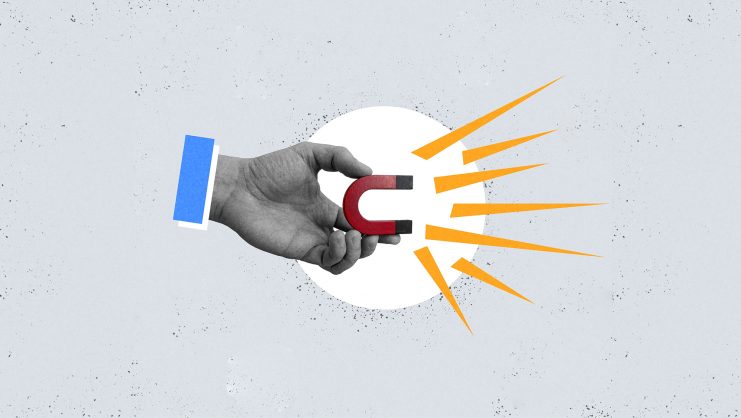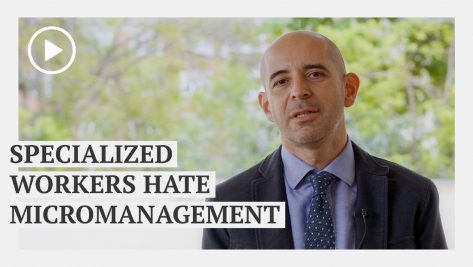Success can be defined in various ways, but ultimately it means getting what you want and achieving what makes you happy. There are two things you can do to increase your odds of success. First, you should constantly strive to generate high-quality opportunities—for example, by studying, networking, discovering the world, and exposing yourself to situations. Second, you have to be prepared to seize opportunities when they arise.
For most people, this second task is a major challenge. Many professionals hold back when an opportunity presents itself and fail to take advantage of the moment. This happens for five main reasons.
The true enemy of talent is allowing yourself to be swept along by the current, by the inertia that makes you think that a particular opportunity is not important enough.
The five obstacles
Being out of place is the first obstacle that prevents people from seizing opportunity. Some people just aren’t in the right place as professionals, as a consequence of either a false positive or a false negative. A false positive happens when you are in your comfort zone, doing a job that is beneath your skill level. In this case, your talent far outweighs the challenges you face, which can ultimately make you self-satisfied. A false negative happens when you are in the right place at the wrong time, prompting you to abandon what could have been your career path.
The second obstacle is insecurity, although we have to distinguish between the good and bad types. Good insecurity functions as an alarm signal and can help you avoid danger, while bad insecurity can make you feel like you will never be fully prepared to face challenges.
The third obstacle is distraction. When you try to be everywhere at once, you become unable to focus on anything in particular. A demanding job can have this effect, as day-to-day emergencies push professionally important matters to the back burner.
The fourth obstacle, disconnection, generally arises after the first three obstacles have already reared their head. Avoid becoming isolated. Build a network—it will become one of your greatest strengths. Good use of social media can be extremely helpful in this regard.
Finally, the fifth obstacle is restraint. If you feel insecure, unfocused, and unsure whether you are in the right place, it’s important to have a network that you can turn to for help. Otherwise, you may end up holding back and missing out on opportunities.
These obstacles are powerful because they are so obvious that they become invisible. To overcome them, you have to undertake a journey of discovery and search for signs. The learning process begins with vulnerability and the feeling that you urgently need to make a change.
Over the course of a long professional career, it can be very difficult to set goals, but you must define a direction.
A successful professional life
A professional life is a long journey that starts with exploration, followed by learning. Along the way, you have to say some good-byes. Only then do you reach a state of understanding, before finally taking action and reaping the benefits. This journey can be understood as a series of interconnected canals. You float down one canal, pulled along by the current. On either side, you see doors of opportunity leading to other canals. They can be big or small, flashy or discreet; some are easy to open, while others require more effort. A particular door might catch your eye, making you wonder whether it leads to a better canal. That’s when you have to observe, explore, gain perspective, and take risks.
The true enemy of talent is allowing yourself to be swept along by the current, by the inertia that makes you think that a particular opportunity is not important enough or that you aren’t up to the task.
When inertia wins out, you settle for more of the same. This refusal to take the plunge is harmful both to you and to your organization. At the other end of the spectrum, if you’re feeling out of place, you might decide to sacrifice yourself, which is positive for the company but not for you. Leaving the organization would be justified in this case, but running away mustn’t become your go-to strategy, since it means losing a professional whose talent could be put to good use.
The opportunities that arise in your professional life will never be perfect. When they appear, you have to be prepared to ask for help, if you need it, in order to create a turning point.
People who succumb to inertia do not create or seize these turning points; they get stuck halfway to the top and end up squandering their talent. They generally think in terms of “superheroes,” which is a serious mistake. Their stillness and restraint arise from the belief that everyone must face their challenges alone—an idea that generates frustration, guilt, and isolation.
Talent is action: without action there is no talent, only promise.
We must face opportunities as heroes—vulnerable creatures who need other people’s help, who rely on the strength of a network, and who understand that daring to start a journey is always better than the alternative. Heroes understand the five keys to success: enjoy the journey, trust yourself, focus, build a network, and ask for help when necessary to prevent doors from slamming shut. Seizing opportunities is not an option but a responsibility. It is the only way to make the most of the talent available in society.
Over the course of a long professional career, it can be very difficult to set goals, but you must define a direction. You have to weigh certain things and bid farewell to others in order to make room for new opportunities. It’s an arduous process, but you have to be ready to deal with imperfection. Even if the end result is not what you expected, the experience will help you learn and carry on. Wherever you go, it will lead to other places.
In most cases, simple strategies can solve the most complicated problems: get some perspective, observe, weigh your alternatives (they are never equivalent), develop the necessary capacities, trust in yourself, rely on your allies, and strengthen your status and personal brand so that others will value you correctly. But most importantly, act. Talent is action: without action there is no talent, only promise.
© IE Insights.











